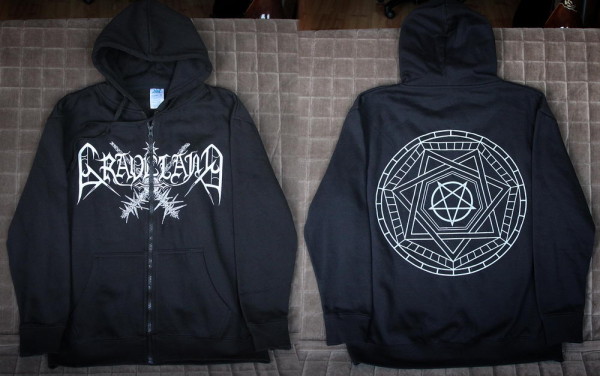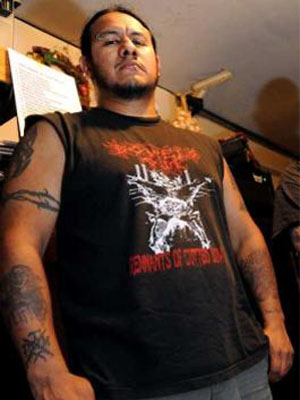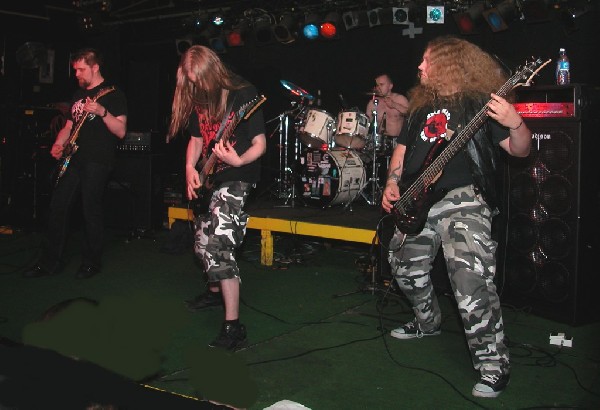
If you’ve suffered through even a few years of big media, you’re probably aware how it functions through symbols. Where literature might describe something, big media trots out a handy symbol that might be described uncharitably as a cliche. Drinking = troubled. Strip bar = edgy. Slow dance = love. Motorcycle = rebel.
This follows the primitive superstition of simple people interpreting religion. When something is bad, put a demon on it. When it’s good, it gets angel wings. The world falls into rigid categories based not on what people do, but what category they belong to as assigned by the cult. This type of cult religion is most commonly seen in mass entertainment, corporate culture, fanboyism, politics and sometimes, even religion itself.
Metal is a useful marketing tool for big media. It enables them to label something as rebellious, “edgy” and dark without it actually being a threat. The albums are available in any store or Amazon. It’s not like joining the Thugees or Cosa Nostra. Like the motorcycle, it’s a cheap way to describe a character without having to actually think about it. And that character will be as much of a cliche as everything else in mass media because it’s designed for the lowest common denominator.
Expanding upon this, Michael Robbins notes how this is true in print as well in “Heavy metal music finds a place in fiction”:
Black metal’s most familiar tropes are Satanism and painting your face to look like a clown. I mean a corpse. But every black metal fan I’ve ever met is, like me, friendly to animals and disinclined to perform human sacrifice. It would’ve been more interesting if Nevill had played against stereotype and made the evil children big Pet Shop Boys fans. As tiresome as Bret Easton Ellis is, at least Patrick Bateman in “American Psycho” listens to Huey Lewis and Genesis.
This is how metal often functions in genre fiction: a lazy signifier of a character’s darkness, alienation and instability. In Elizabeth Hand’s “Available Dark” (2012), a girl describes someone obsessed with serial killers: “He’s creepy. He was into death metal, then black metal. Mayhem and Vidar and Darkthrone, bands like that.” Note the progression: death metal, a gateway drug, is less evil than black metal, but it still indicates that something’s not quite right: Stieg Larsson’s Lisbeth Salander listens to death metal. This is one reason it’s funny when two characters in Thomas Pynchon’s “Bleeding Edge” meet cute by learning that they share a love of “Norwegian Black Metal artists such as Burzum and Mayhem.” (Burzum is the musical project of Varg Vikernes, who also played bass in Mayhem until he murdered the guitarist.)
These examples show us the place metal has taken in the culture of mainstream society.
It is a certain kind of riskiness, a certain darkness, and a certain commitment to alienation. People who bond over liking black metal are people who have receded from society at large and are trying to go their own way. But with that truth, there is also the realization that metal forms a handy symbol, like the word “edgy” once did, for what the mainstream considers safe alienation.
It is alienated, true, but the fans aren’t the ones burning churches and murdering people. They are just spectators. It is for this reason that the music industry keeps trying to create “safe” versions of this music, so that people can feel like symbolic rebels but never venture beyond the safety of being obedient little cogs.
3 CommentsTags: Heavy Metal, media, metal, rebellion, symbolism






